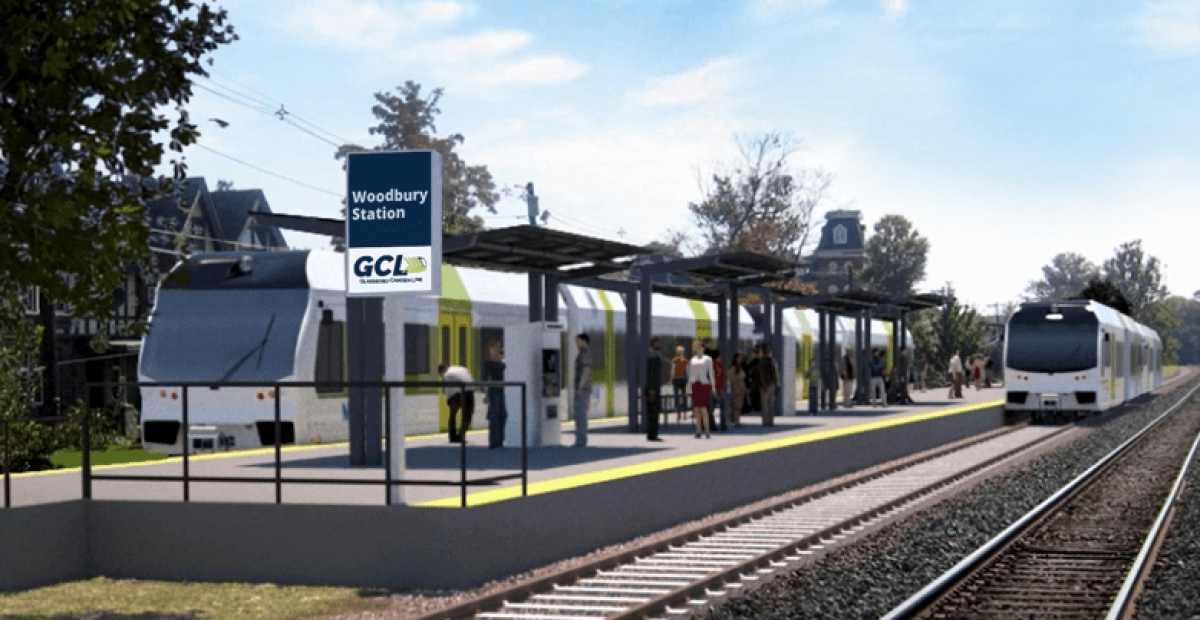Following the release of an Environmental Impact Statement (EIS), two representatives for the Glassboro-Camden Line (GCL) construction project spoke during the Rowan University Student Government Association (SGA) Senate Meeting on Monday, March 22, before senators voted in favor of a resolution that supports the construction.
John Hanson, CEO of the Delaware River Port Authority (DRPA) and president of the Port Authority Transit Corp. (PATCO), and Michael Venuto, the chief engineer of DRPA and a Rowan University engineering professor, answered questions from senators.
The GCL would span 18 miles and connect Camden to Glassboro through diesel light rail vehicles (DLRVs) along 14 stations. Sponsored by DRPA, PATCO, and NJ Transit, the GCL would effectively connect Gloucester and Camden counties in New Jersey to Philadelphia, Pennsylvania through its connection to the Walter Rand Transportation Center in Camden.

“It will be similar to the [New Jersey Transit’s River Line] in the way it looks; its light-rail. We have $200 million committed to the project right now. That money is for preliminary engineering and project management. The EIS was completed this past February,” said Hanson.
The $200 million contribution that Hanson referenced is from the South Jersey Transportation Authority (SJTA). According to Kimberly Testa, the media representative for the SJTA, the donation is intended to help alleviate roads under their jurisdiction, such as the Atlantic City Expressway.
“The goal of the GCL is to increase mobility and access to safe and efficient transportation alternatives that will help alleviate bottlenecks and congestion along the Glassboro to Camden corridor in South Jersey, including the Atlantic City Expressway, Route 42, Route 55, I-295, and I-676. The project expands passenger rail service in South Jersey and provides a viable alternative to existing motor vehicle dependency,” said Testa.
While some residents along the construction zone have voiced concerns about the project, there is no denying the advantages Rowan students would see from its construction; according to Hanson, the university would have its own walk-up station.

“We believe this new line will be a benefit for South Jersey, but especially for Rowan University,” said Venuto. “Think about the internships; as a civil engineering professor at Rowan, I interact with students all the time, and this will provide them greater mobility to find jobs and internships while at school.”
Students without access to vehicles may be the greatest benefactors of this project, considering the 14 total stops throughout Gloucester and Camden counties.
“What’s exciting about this project is that it will expand the Philadelphia-Camden Metropolitan region and dramatically increase the number of people who can access the cultural, recreational, economic, educational, and medical facilities on both sides of the [Delaware] river,” said Hanson.
Hanson said that a lot of the proposed GCL’s right-of-way is on already-existing Conrail, while some of the track will be in a new railway zone from the Walter Rand Transportation Center into south Camden.
“The right-of-way means the strip of land which there are already Conrail lines running tracks through; we are going to put another set of tracks right next to them and run alongside it. Our trains will be a lot more frequent than the Conrail freight trains, probably every 15 minutes during peak time,” said Hanson.
While the $200 million contributions from the SJTA help with this transit project’s initial hurdles, the total estimated cost is approximately $1.6 to $1.8 billion.
“The biggest hurdle is going to get all the funding together. We got a significant chunk now, but we will need more to finish,” said Hanson. “It’s not money that’s being wasted or tossed away; this is an investment in public infrastructure, people, and also the environment. I think public transit projects like GCL are a big start to help alleviate environmental problems.”
There is no official date for the beginning or completion of the GCL. The Whit will be following up with this story as new developments roll out.
For comments/questions about this story, tweet @TheWhitOnline.

























































































































































!["Working with [Dr. Lynch] is always a learning experience for me. She is a treasure,” said Thomas. - Staff Writer / Kacie Scibilia](https://thewhitonline.com/wp-content/uploads/2025/04/choir-1-1200x694.jpg)

















































